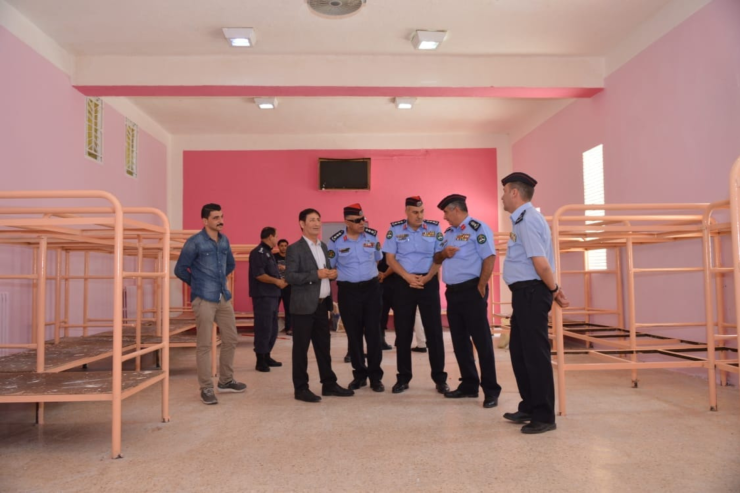
The Initiative of the Department of Correctional and Rehabilitation Centers and the Cultural Association for Post Release Care
The Role of Color Therapy in Rehabilitation
Color therapy, also known as chromotherapy, is a holistic healing method that utilizes colors to influence emotions, mood, and mental well-being. During the rehabilitation phase, especially for inmates in correctional centers, color therapy plays a crucial role in reducing stress, promoting relaxation, and improving emotional stability.
How Colors Aid in Rehabilitation
Inmates undergoing rehabilitation often experience high levels of stress, anxiety, and emotional instability. By incorporating color therapy into their environment, particularly in workshops, therapy rooms, and sleeping quarters, their mental and emotional states can be positively influenced.
1. Colors and Their Psychological Impact
Each color carries unique psychological and emotional effects that can aid in rehabilitation and emotional healing:
Blue – A calming color that reduces stress, promotes relaxation, and enhances focus. It is ideal for sleeping areas to create a sense of peace and stability.
Green – Represents balance and renewal, fostering a sense of hope and emotional recovery. It is effective in spaces designed for therapy and reflection.
Yellow – A color that stimulates optimism and energy, helping inmates feel more positive and motivated. It can be used in common areas to uplift the mood.
Orange – Encourages creativity and enthusiasm, making it a great choice for rehabilitation workshops where inmates engage in activities like painting, pottery, and other crafts.
Soft Neutrals (Beige, Light Pink, White) – Create a sense of cleanliness, order, and mental clarity, helping inmates feel less confined and more comfortable in their living spaces.
One of the most impactful color choices in our rehabilitation program is pink, which we have selected as the primary wall color in sleeping areas and common spaces. Soft shades of pink are known for their calming and therapeutic effects, helping to reduce aggression, anxiety, and stress. Studies have shown that pink fosters a sense of comfort, security, and emotional balance, making it an ideal color for enhancing the psychological well-being of inmates during their rehabilitation.
2. Color Therapy for Sleeping Rooms
The sleeping environment plays a crucial role in an inmate’s mental and physical health. Research shows that color choices in sleeping areas can affect sleep quality, mood, and overall well-being.
Avoid harsh colors like bright red, which can increase aggression and restlessness.
Use soft whites, and pinks to create a serene and calming atmosphere.
Light neutrals help in creating a sense of space, clarity, and emotional relief.
By designing rehabilitation centers with carefully selected colors, inmates experience a more peaceful, structured, and supportive environment that enhances their emotional and psychological recovery.